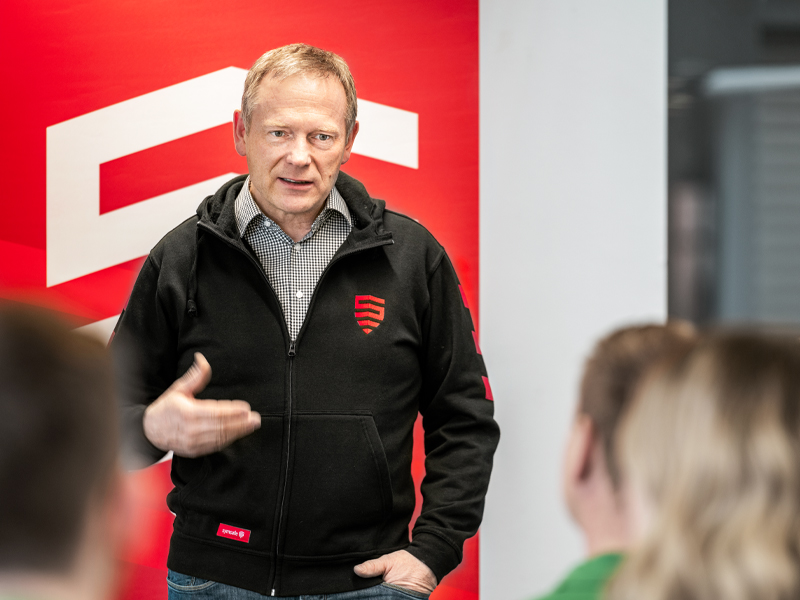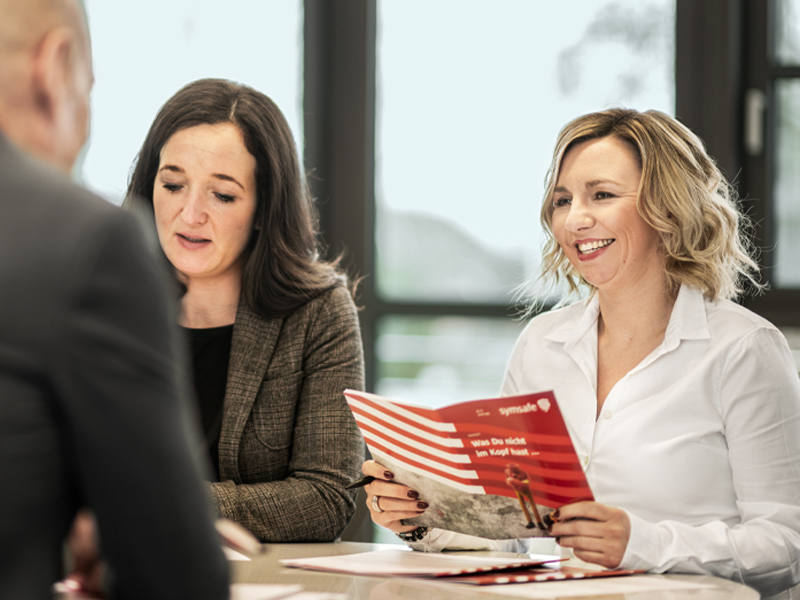It’s 1:00 p.m. A special shift awaits the warehouse team of the Symrise subsidiary Symotion in the atrium of Symrise AG: This team, consisting of eight men and women who ensure every day that the products of the Group are sent out all over the world, were about to take part in their first kick-off event as part of Symsafe – the occupational safety campaign that Symrise started last year across the Group. The two-hour workshop, intended to achieve the objective of the long-term campaign with different modules – more occupational safety, fewer accidents, and therefore also fewer health risks for the employees – then started after a short introduction.
The meeting, which is held as a kick-off event at all departments at Symrise, started off by asking participants for all kinds of information. Cosima Hebestadt, member of the project team, who is currently completing her cooperative studies towards a Bachelor of Business Administration in the communications department, carried out the safety culture check. This check determines the status quo of occupational safety within the particular department. In the questionnaire, the employees answer around 25 questions on issues such as leadership, communication, participation, error culture, teamwork and safety organization, which Symsafe is based on. During the remainder of the workshop, she evaluated the responses and concluded by presenting the fields that showed the greatest need for development. Philipp Müller, external occupational safety consultant, and Kristin Frese, external coach for changing work culture, then took over together with the Symrise occupational safety team. They introduced initial occupational safety concepts and got the employees actively involved, for example with a “World Café.” During this activity, they asked employees questions about specific topics at three different tables and then asked them to write them down on the tablecloths and discuss them afterwards. One of the discussions centered around why you should be mindful of occupational safety in the first place. In the end, the participants had written down keywords such as “consequences,” “involvement in decisions,” “teamwork” and “risks” on the tablecloth.




